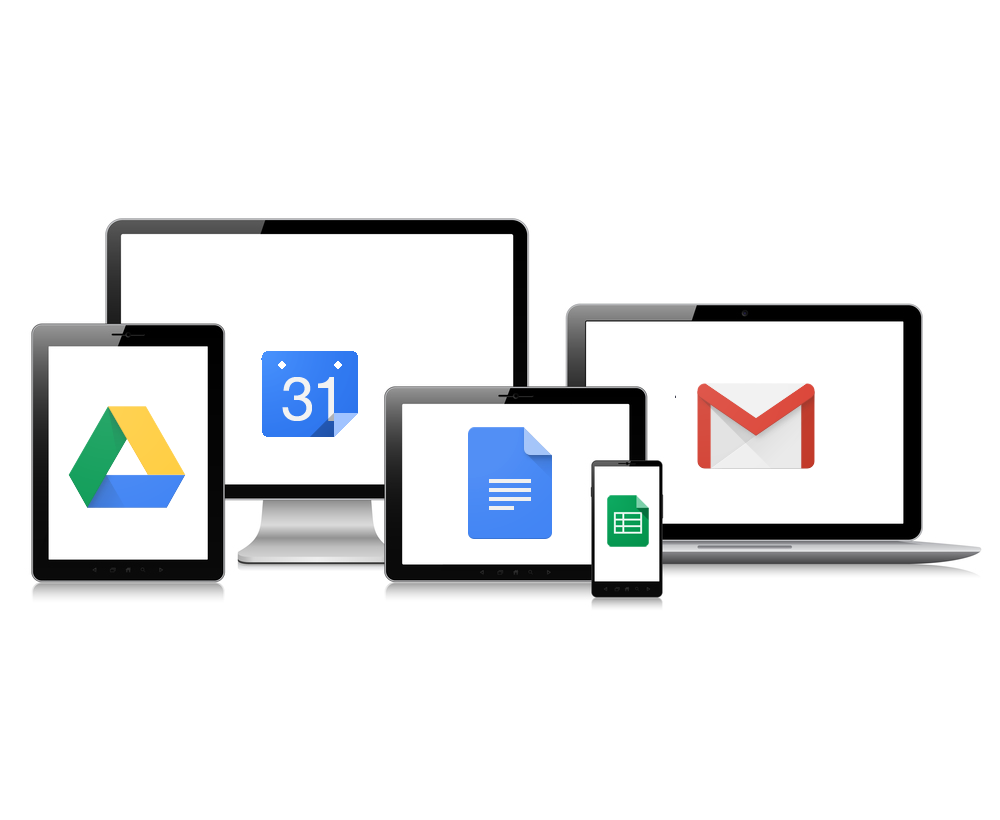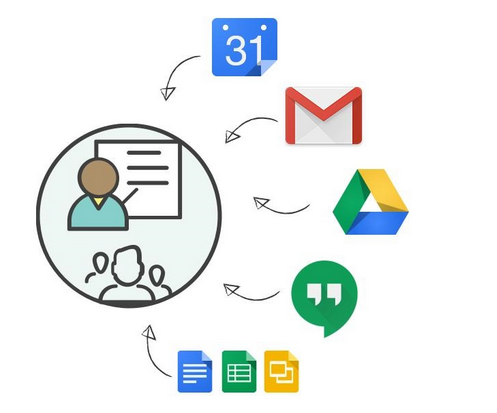
Why we Chose Google Apps for Work
12 month’s ago we rolled out Google Apps for Work across our organisation. It’s something we’d been kicking the can on for a long time and looking back, we waited a long time not knowing the incredible level of awesome we were missing out on. It’s really promoted collaboration amongst our team and made it a lot easier and faster for us to work on documents together from anywhere.
It got me thinking how’d we get here, why did we choose it and why are we now selling it (beyond just using it!).
The way it was – working within a team and document collaboration
10 years ago doing work in a small (or even big) office looked something like this:
Let me just email you this file. You can work on it and I can hopefully work out what you did afterwards. Oh crap our fileshare server is down. No wait it’s back up… Ok I can access it now. Ok cool you have more changes? Alright, I’ll send it to you again. What!? More changes, fine.. let’s do this a couple more times. Oh crap we both worked on the file at the same time and you saved after me… I’ve lost ALL my changes!!
This is honestly how I recall most businesses I’ve worked for operated (and scarily some businesses still today).
Even beyond Google Apps, technology has really brought us to real-time, collaborative, work-from-anywhere environments.
For us, working with Google Apps is something a little more like this:
Hey sorry, I’m actually in a taxi heading to the airport, do you mind sharing the doc with me? Great thanks, got it. Ok I’ve fired up my Google Docs app on iPhone. Few minor changes here or there, actually I put them as suggestions and added a few comments. Oh shoot, I accidently deleted some of your text, all good I’ll just roll back the document 3 versions – there it is. Great work, I also shared it with Paul so he’ll get an email about that shortly.
I think it’s fascinating that travelling in a cab going 80 km/h from my mobile phone I can easily edit a document and provide comments, and anyone else in the document can see me doing all these actions in real-time.
Move over licenses, hello subscriptions.
It’s worth quickly touching on why Cloud (SaaS) based apps are winning the war. I feel a bit queasy using that word, but you can’t fight it – cloud-based apps are well and truly changing how we work. Typically SaaS applications are just applications that are hosted by someone else and run in your browser (as oppose to your desktop computer). Typically they’re subscription based models and per user pricing – i.e. you pay $x per user per month. In my mind this completely trumps the old licensing models for several reasons:
- No monthly contracts – If the app doesn’t bring you value, you’re free to leave without feeling burnt.
- You essentially are funding continuous development – This is the big one for me because it is unlike the old licensing model (e.g. pay $150 for an upgrade each year). As long as the app is bringing you value and run by a good company they will continuously invest in new features constantly and you have the freedom to move if they don’t.
- Depending on the number of licenses required you are quite likely to save money (e.g. buying 5 desktop licenses at $150 per license). On the flip side, this is also less capital expenditure up front for small businesses!
- Scale – Most SaaS products allow you to add on or remove licenses when you need them which is great for small businesses who don’t want to scale up and minimise upfront costs.
- Disaster recovery – Because things are stored in a central server (e.g. not at your office) you have the benefits of disaster recovery (e.g your office internet/power goes down).
- Application security – Most people claim this is a risk, but I would argue this is actually a benefit. Most SaaS companies have tighter security controls than small offices because they recognise this as a risk to their brand as well.
To be as unbiased as possible I’ll also point out some potential risks:
- Data sovereignty – You need to check where your data is hosted, usually in the Privacy Policy or the like, and most companies are very open about this.
- If it’s a free app, you’re likely the product – Be careful with free SaaS-based apps which usually use your data for analysis/marketing purposes – this isn’t always a bad thing just something to be aware of.
Enter our Managed Google Apps

Google launched Google Docs (think Microsoft Word in the cloud) and Google Sheets (think Microsoft Excel) which is now part of the Google Apps for Work set of productivity tools on October 11, 2006.
It was at this point I became interested in the software. There’s NO WAY I thought that you would be able to replicate the functionality of Microsoft Excel in the cloud. Working in Banking, at the time, Excel was probably more widely used than Word and was a really great tool.
I was, unfortunately, right. Google Sheets was kind of buggy, slow and also didn’t have Pivot tables (one of my most used features). So I shelved Google Sheets and waited until it was just a touch more polished.
17 May 2011. The day I become a convert. The day Google launched Google Sheets with Pivot Tables. By this stage, the app has had 5 years of development, is really solid and I’m shouting its praises from any rooftop permitting.
Fast forward to today… Google Apps for Work is now almost 10 years old. Ten. X. And only 5 million businesses use it? That’s crazy!
They are incredibly refined apps, which have a load of features rolling almost continuously and has been adopted by more than 5 million businesses worldwide. It got us at Crucial thinking… that number feels incredibly low considering all the benefits it brings.
Looking back we thought about why other small businesses may not be adopting it at a faster rate.
We realised that education and setup were probably a big road block and the fact that most small businesses don’t have an in-house tech dude means that a lot of what technically-savvy people take for granted, most small businesses can’t administer themselves.
That’s when we had the idea for a Managed Google Apps product. One that anyone can get in contact with us 24x7x365, backed by Crucial support. One that automates a significant amount of the setup for most use cases and does a host of other setup tasks we found daunting ourselves. One that has an easy-to-use dashboard (I’d say even easier than Google!) to do the most common tasks small business users would be doing – adding or removing users, adding email forwarders/alias’ etc.
Over the course of the past few months, our team has been working exceptionally hard at developing our Managed Google Apps product and we’re really excited to share it all with you.
What’s even more exciting is our roadmap for new features we’ll be introducing over the coming months to make it even easier to setup and use.
The problems it solved for Crucial
For a few minutes let’s just forget that it’s a ‘Google’ product. Sure they’ve done a lot of great things but they’ve also done a lot of not-so-great things which, ironically, a quick Google search will reveal some of these majestic failures.
In terms of problems it’s solved for us I’ve broken this down more into business ‘types’ – we actually hit a lot of these, but I find that speaking with customers the value of Managed Google Apps comes back to what specific problems it solves for their business rather than what it solved for us.
Email-based businesses
- Spam protection – Email is here and likely isn’t going anywhere for a while. We were having a significant problem with spam and were having to use a third party to do spam filtering for us. Even then whilst the spam stopped we still had a lot of false positive (e.g. legitimate mail getting flagged as spam).
- Email Interface – Whilst a lot of our customers use Zimbra, Squirrel or Horde mail, customers on our Managed Google Apps get the power and features of Google Mail (think Gmail). Also, if you’re really on the bleeding edge, Google has just launched Inbox which is a very cool way of rethinking email – http://www.google.com.au/inbox/
- Not affected by common Shared Hosting issues – For customers who have their website and email on shared Web Hosting products (i.e. not a VPS) moving to Google Apps means your email isn’t affected by common, shared server issues, such as DDoS attacks, spam black listings etc.
Work-from-anywhere businesses
- True, usable mobility – This is undeniable. Whether you’re on mobile or desktop you can definitely work with Google Apps for Work on the go. The impressive thing is the suite of mobile apps for iPhone and Android are surprisingly usable to do common tasks such as create and edit documents – a common shortcoming of most web-based apps.
- Sharing documents – Depending on your security tolerance this is a big tick as well. Google Apps has the ability to share documents you’ve created with someone even if they don’t have their own Google Apps account. Gone are the days of receiving a .docx file and cringing because you were still running an old version of office or worse, didn’t have a copy at all.
Heavy Microsoft Office businesses
It’s worth pointing out I have used Office 365 and whilst it is quite feature-rich, I have still found random bugs and a noticeable speed difference between Google Apps and Office 365. In terms of performance, for me, Google Apps wins hands down in both load and response times.
You don’t really need Office, seriously – When you think about it Google Docs, Sheets and Slides do 90% of what an average Microsoft Office user uses these apps for – I really learnt this in banking where I found that a lot of people really don’t use many of the features of Microsoft Office. I’m confident that Google have specifically rolled out the feature sets that 90% of users actually use. For example even though I’m a big fan of Pivot Tables I’m still amazed at the number of people who don’t know what they are or how to use them to make their life easier. Either way even these are included in Google Sheets.
Office for Mac is really quite bad – The number of Macs using Boot Camp or a Virtual Machine just to run a usable, PC version of Microsoft Office is terrifying. I’d argue that Google Apps for Work is actually more stable than the Mac version of Office. With a few Mac users in our office this also meant we could save on purchasing licensing (currently $139.99 for 1 license). I also found the 365 version of Excel is definitely a bit buggier than Google Sheets.
Other random problems it solved:
Easy to use forms – If you’re a business that uses SurveyMonkey or Wufoo whilst these apps are definitely worth it for power users we found ourselves only using the basic functionality and can get away with Google Forms. For example, we now use this in our interview process to send people a simple questionnaire. Super easy to setup and the results pipe into a Google Sheet for even easier analysis.
Final Thought
When we look back at all the problems Google Apps solved for us we’re amazed. Even now we really can’t think of any new ones it has created either. Whilst the initial change is always tough, with our Managed Google Apps product we’ve genuinely tried to make this as painless as possible to get on board based on our successes and failures.
I think a fitting way to sign off is to say I wrote this article entirely in Google Docs. I did this from three different locations over the course of a week and had our Marketing team review it a few times adding comments and suggestions all without sending a single email. Viva la Google Apps!



